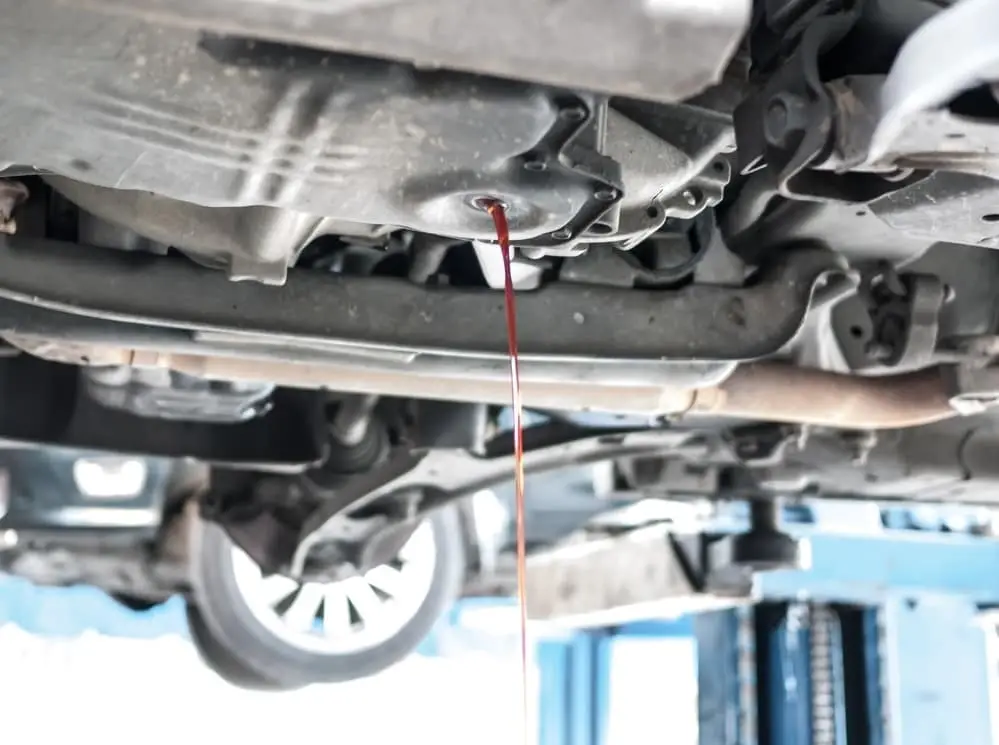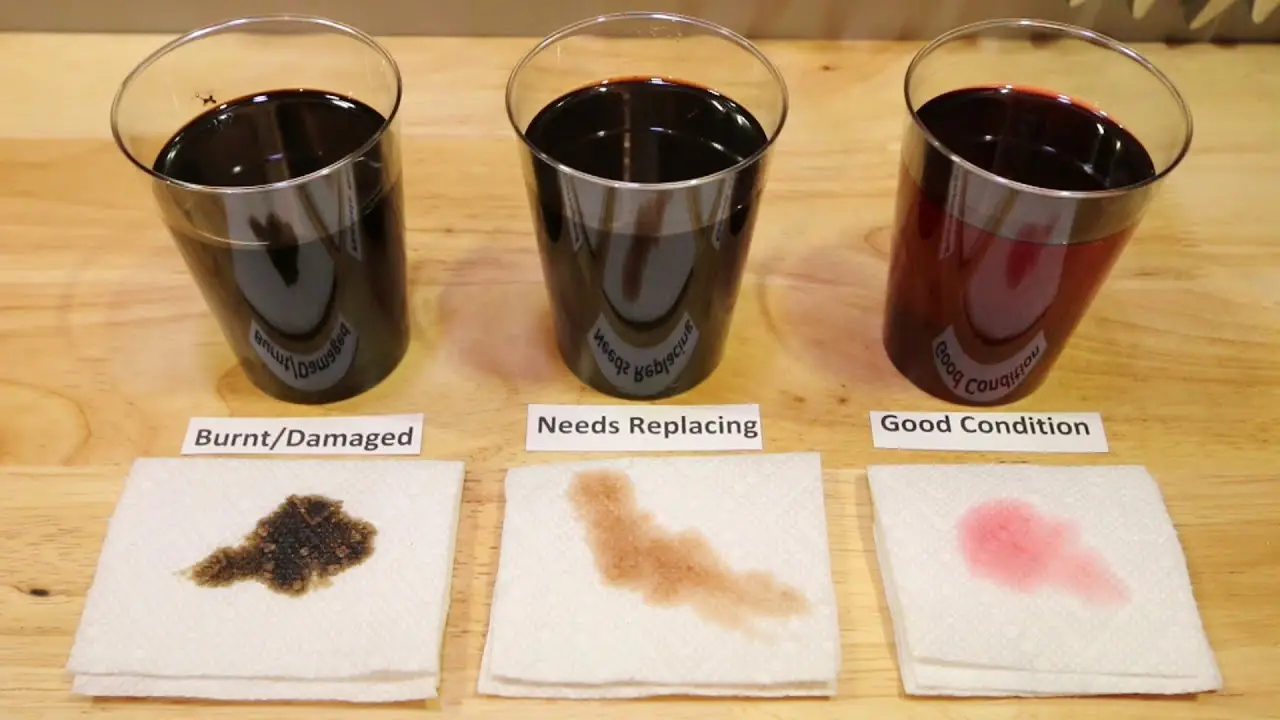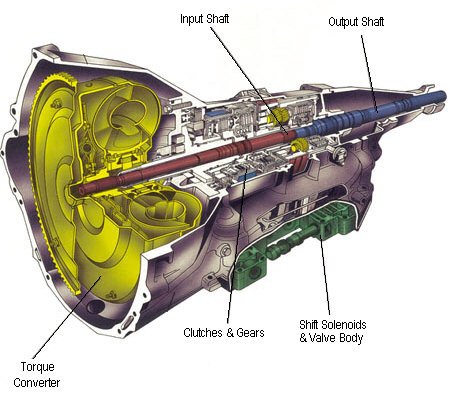You might have heard about the transmission fluid in your car, but you might not have given this chemical concoction any importance before this. Well, that is because you don’t know what this fluid does under the hood of your car.
Transmission fluid is crucial to lubricate all the parts within your transmission system. It helps in reducing wear and tear that occurs due to heat and friction. Most new cars are coming with lifetime automatic transmission fluid, which is synthetic in nature. It doesn’t require much servicing and has a long life expectancy.
This article will explain how often and how to change it to keep the system running smoothly and ensure that the transmission doesn’t slip.
What is Automatic Transmission Fluid?

Both automatic and manual motor vehicles have transmission fluids in them. And the most common being used is ATF or automatic transmission fluid. It comprises a refined base oil mixture containing some additives. The purpose of these additives is to create adequate lubrication required for several mechanical elements in your vehicle.
The transmissions within your car are not just a single component as there are numerous interconnected moving parts that have to be lubricated all the time. It is important to prevent any build-ups and residues or even dryness that might cause breakage, transmission overheating, or grinding.
Here’s a brief video on what this fluid is and how to change it for your assistance.
Common Signs You Need to Change Transmission Fluid
If you have been dealing with some issues with your car transmission, then you need to check your transmission fluid immediately. Most of the issues can be due to the fact that there is not much fluid or its quality is questionable.
Some cars have a transmission dipstick to check your transmission fluid level. But most of the newer model cars are coming with dashboard alerts that notify you about the transmission fluid levels. The reason behind this evolution is that you need to be well informed about the color and fluid level of your ATF as well as engine fluid. Therefore, you might have a notification light in your dash instead of a transmission dipstick to check the fluid level.
Now cars are coming with lifetime automatic transmission fluid. Synthetic fluids have a long life expectancy. It is a much better option to use as compared to petroleum-based fluids, and you don’t need to check the fluid level.
Some of the common signs that you need to change the transmission fluid are listed as follows:
- The transmission doesn’t engage, or it doesn’t stay in gear during driving.
- You might notice a jump in gears or a constant shift delay.
- Transmission seems to slip away, or the engine might seem to rev without any shifting.
- The engine block has transmission fluid leakage.
- A humming sound with a burning smell is coming out of the engine.
- Your vehicle has lost its power and doesn’t operate.
- Your dash is showing transmission operating temperature or Check Engine light.
How Often to Change Transmission Fluid?
You need to go through your vehicle’s owner s manual to determine how often you should change the transmission fluid in your car. The manual will also guide you on which type of fluid we should use and other info as well.

Most motor experts recommend changing the transmission fluid after 50 000 miles to 85 000 miles with service intervals in between. But it largely depends upon the driving behaviors as well.
If you use your car in cold/hot climates, high traffic, hilly terrain, carries or toes heavy loads, or if you are planning to keep your vehicle for more than 100 000 miles, then you will have to change the fluid more often to keep it fresh and clean even if you use that lifetime synthetic ATF. Be sure to make it a part of your maintenance schedule with your engine oil change.
Most manufacturers recommend that manual transmission fluid needs to be changed from every 30 000 miles to 60 000 miles for regular use. And in case of heavy use, it needs to be changed from every 15 000 miles. But 30 000 to 60 000 miles is recommended for most vehicles. 30 000 to 60 000 miles is the recommended number because manual transmission requires oil change during that period as well. Doing this will avoid transmission failures.
Automatic transmissions require a change of fluid from every 30 000 miles to almost never. The service interval of automatic transmission here ranges from 60 000 miles to 100 000 miles. It is better to go with the oil change. But if you change it more frequently, then there won’t be any harm. Just schedule it with your engine oil change to avoid transmission failure.
What Happens If I Don’t Change My Transmission Fluid?
Manual transmissions don’t pose much of a problem of fluid degradation. The problem here is fluid contamination, which occurs with the passage of time due to gears, bearings, and synchronizers beginning to wear out. Due to wear and tear, the resulting metal particles begin to float within the lubricant. This also happens if you don’t follow a proper maintenance schedule.

Therefore, you need to flush out the fluid to get rid of these contaminants. Automatic transmission fluid requires changing because more heat is generated in this system, and the fluid degrades over time. With heavy use, this fluid also becomes contaminated with metal bits, and you have to drain them out to improve the performance of the fluid.
If you don’t change the fluid regularly, your transmission system will have metal shavings and various other contaminants, and it can reduce the transmission’s life significantly. This can result in hefty payments to your mechanic in terms of maintenance and repairs.
Are Transmission Flushes Really Necessary?
First of all, you need to know that transmission fluid change and transmission fluid flush are two different things. And your vehicle’s owner s manual will guide you whether you need to change or flush your transmission fluid.

Change the Transmission Fluid
When you are looking to change the transmission fluid, you will open the transmission drain that is present on the underside of your vehicle. It will result in about 45% to 50% of the fluid to drain out in the transmission pan. The remaining of the fluid remains in the torque converter as well as other parts of the transmission.
Transmission Fluid Flush
On the other hand, flushing your transmission fluid involved completely changing the fluid in your transmission system. You will have to twitch a hose to the input line of the transmission and another line to the output hose. When you pump in new transmission fluid, it will push or flush out the older one from the outgoing hose.
Flush or Change
Flushing instead of changing the transmission fluid would be suitable if the fluid is in good shape and there is no damage. Flushing damaged fluid can gunk up at the bottom of the transmission and your car and lose its ability to shift gears. That is why changing transmission fluid is something that troubles many car owners. But if you change your fluid with a proper maintenance schedule, this problem won’t occur.
How Much Should A Transmission Fluid Change Cost?
When talking about changing or flushing transmission fluid, make sure that you leave it to the transmission experts and only do it yourself if you know what you’re doing. The cost of transmission fluid change from an automotive dealer, an independent mechanic, or a service center can range from $80 to $250.
On average, this cost is approximately $100 for both manual and automatic transmissions. But if you know how to change the fluid on your own, then it will cost you around $40 to $90, which will save vehicles cost up to some extent.
Factors Affecting the Transmission Fluid Change Cost
There are different factors that influence the cost of transmission fluid change.
- Whether you are getting it done from a dealer or a service shop, or an independent mechanic.
- The model and brand of your vehicle because high-end vehicles will cost more.
- The type of ATF (automatic transmission fluid) being used for flushing.
- Amount of the fluid needed for the car.
- And the labor cost.
Final Word – Should You Change It If It’s Never Been Changed?
There can be various reasons why your car is running low on transmission fluid. As it keeps all the moving parts in your transmission lubricated, you don’t want it to run low as it will damage various engine components, and it can result in massive repair and maintenance bills for you.
Whether you change it or not for the first time is a good topic for debate. But it all depends on your car. If you follow the owner s manual, you will never go wrong with your transmission fluid changes.
And if you are a stop-and-go driver in the city, then it seriously accelerates the deterioration process. And if you haul or trailer towing a lot of heavy items and equipment, then you will also have to change the fluid more frequently than others.
